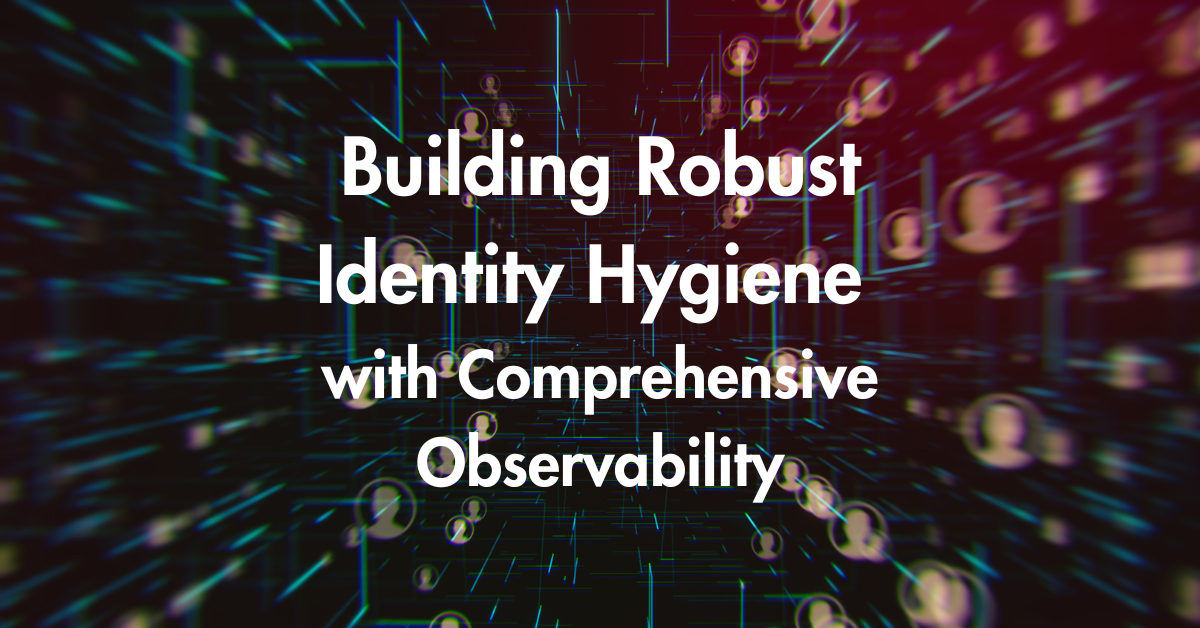- Sep 30
Building Robust Identity Hygiene with Comprehensive Observability
Updated: Sep 30

The rapid growth of IAM infrastructure and tools required for managing access to both cloud and on-premises assets across the modern hybrid enterprise is driving rapid growth in the number of accounts, credentials, roles, and access paths. As a result, a very complex identity fabric is created - one that is very difficult to protect. In order to protect a complex identity fabric against threats, full visibility is required across all identities, assets and access paths - at all times. However, the dynamic enterprise environment introduces constant changes at a fast pace. The lack of continuous visibility hampers the ability to effectively assess and manage the security posture, making it difficult to identify and address identity hygiene issues that could lead to significant security risks.
Why Is IAM Hygiene So Difficult?
IAM hygiene plays a major role as part of an enterprise IAM program’s initiative to secure the identity infrastructure. Hygiene has always been part of an IAM program, so why is it more important now and why can’t organizations manage it? The ability to provide a comprehensive analysis of human and non-human identities, distributed across multi cloud and on-premises environments — has become more difficult:
- A lack of visibility into identity activities across IAM silos
- Incomplete implementation or configuration errors of IAM security tools like PAM and MFA are difficult to discover
- Lack of automation, manual processes are difficult to maintain
- Lack of budget and resources
- Shortage of skilled professionals
Bad IAM hygiene is often a result of low maturity of controls, operating in IAM silos, or poor maintenance of the IAM solutions themselves.
Lack of Visibility Due to Siloed IAM Solutions
A recent Gartner report titled IAM Hygiene: Laying the Groundwork Through Continuous Discovery by Felix Gaehtgens and Rebecca Archambault explains that identity hygiene requires visibility, but that visibility is difficult to achieve due to siloed IAM solutions. One of the key recommendations in this report is to install a “continuous discovery process” to unveil hidden access - they explain that the lack of continuous visibility makes it difficult to assess and manage the security posture, and thus to identify and remediate identity hygiene issues.
Good identity hygiene requires continuous discovery: the dynamic nature of modern IT environments means that new accounts, credentials, assets and access paths are constantly being created. Without continuous discovery, these new identities might go unnoticed, leaving potential security gaps that attackers could exploit.
Comprehensive visibility, achieved through continuous discovery, enables organizations to maintain an up-to-date inventory of identities and ensure that access controls are applied properly.
AuthMind’s Identity Observability
AuthMind’s Identity Observability enables our customers to understand identity systems and tools based on the access paths activity around and to them and their outputs, and helps address questions about their behavior. AuthMind’s observability capabilities enable identity security professionals to collect and quickly explore identity activities and access paths, using an AI-powered Identity Access Flow Graph that rapidly investigates any threat, adds critical contextual data, and narrows the possible explanations for errant behavior.
By identifying and monitoring newly created accounts and credentials as soon as they appear, organizations can quickly assess their legitimacy, apply appropriate access controls, and address any potential vulnerabilities. Continuous discovery ensures that unauthorized or misconfigured identities don’t linger undetected, reducing the risk of privilege escalation, insider threats, and other security issues.
Observability Across Multi-Cloud Hybrid Environments
Unlike other Identity security solutions, AuthMind goes beyond monitoring the known managed identities and assets. It tracks and analyzes any human or non-human identity activity, whether managed by a known IdP or directory, or not. It covers all access paths - whether the identities are accessing managed assets through the desired paths or not, even covering direct access (like local login to a device). It also tracks access to unknown assets, i.e. shadow assets, that are not managed by the IT or security team, and therefore remain unprotected. And it tracks any changes to the identity systems we rely on to enable secure access across the enterprise.
Since AuthMind gains visibility into identity activities and access paths not solely based on monitoring IAM and authentication solutions, but also from monitoring access paths and activities through logs that are already collected in SIEM and data lake indexes, it can identify coverage gaps that were left due to incomplete implementation of IAM systems, access paths that bypass existing controls, usually as a result of configuration errors, and other activities that can indicate weaknesses that expose the business to risk.
This makes AuthMind the ultimate identity security platform for ensuring complete visibility, observability, and real-time protection. It enables organizations to improve their identity hygiene, reduce identity-related risks, and manage their identity security posture for the long run.

